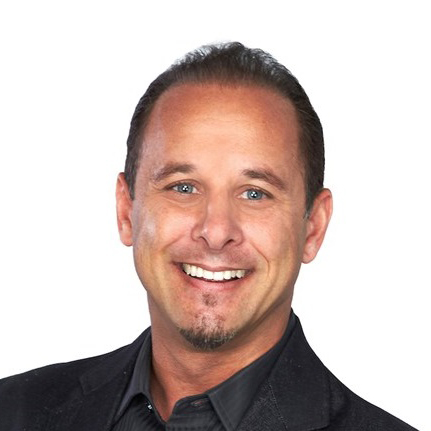by Miles Bodzin, D.C.
CEO of Cash Practice Systems
We’ve all seen it before. Jane Doe gets into a car accident, receives care at little to no out-of-pocket expense. The case is closed and you never see her again. Or, you may see her again but it’s due to another personal injury case.
It’s just one of the many holes that need to be filled in the leaky bucket of client retention– such is the curse of having a patient that is not financially responsible for their own care! Whenever someone else is footing the bill, the two main causes for this hole in the bucket are 1) they do not see the value of care, and 2) they are not accustomed to that additional payment in their monthly budget.
So, how do we solve this issue? How do we get that patient to transition to self-pay care once their case is closed?
1. Show patients the need for care beyond initial pain management.
For example, a personal injury patient comes to see you after an auto accident. When care begins, in addition to all the findings pertaining to their injury, present the patient an objective measurement of their overall health. A great way to do this is to give them a report card with a health grade. We would perform an examination on them that measures not just their pain and symptoms, but also their overall health.
Then, to communicate most effectively to the patient on where they stand, we would present them with a “report card” with a grade.
Let’s say they start out with us as a D-. When their Personal Injury case is ending and we do our final exams, we can show the patient that we were able to get them from a D- to a C+ throughout the course of their care. The doctor would have a conversation with that patient that although they made great progress, we can continue their care to get them from a C+ all the way up to an A.
2. Have ongoing patient education teaching the value and importance of Chiropractic care.
One of the more obvious things you can do is to educate the patient during the course of their injury care. Provide ongoing, repeated education on the benefits they are getting as well as to how they will benefit when they continue with care after their injury care has resolved.
Patients are like plants, water them regularly and they grow. Educate your patients regularly and they’ll grow as well; it’s a lot like drip-irrigation except we do Drip-Education for our patient education. Rather than flooding the plants with water all at once, we give small amounts of water at regular intervals. Not only is this more efficient, but it’s the most beneficial to the plant.
The same principle applies to our patient education. We can’t expect them to “get it” and change their lifestyle based on information that we have flooded (and most likely overwhelmed) them with. By using a drip education, we would automate their education via email. Once a week they would automatically get valuable information on the benefits of Chiropractic emailed directly to their inbox without any additional steps required from us.
Another opportunity to educate the patient is every time they’re in your office, whether it’s when they see you for your adjustment, a physical handout, a slideshow on a TV by the front desk, or in your bathroom (yes, we did that!). These are all opportunities to open their eyes to the value and importance of Chiropractic care.
3. Even if someone else is at fault, collect a monthly amount automatically from the patient.
We know that it’s hard for the PI patient to see the value of care when they aren’t directly paying for it. What’s even more difficult is transitioning them to care after their case resolves if they’re not paying.
Another route that can be taken is that during their injury care, have them pay for a small portion of their care each month. This puts them in the habit of paying monthly and then it’s not too far of a stretch once their case is closed to talk to them about money. For example, have them pay $100 to $150 per month on an auto-debit.
By the time their case settles, they may have paid in over $1,000 – $2,000 of their own money. If the patient’s total bill was $4,500, you would only be owed $2,500 – $3,500 at settlement. In essence, the patient would get their $1,000 – $2,000 back when the case settles.
Think of it as someone paying taxes and then gets a tax refund at the end of the year. In addition, if they do not settle their case for enough money, they have already been paying your office so any amount they are responsible for afterward has already been paid down.
4. Atmosphere, atmosphere, atmosphere
This should go without saying! Your office should create a gut reaction in the patient every step of the way that they are in the right place. We have a simple formula for creating this gut feeling that can be several articles in itself.
In a nutshell, we are creating an atmosphere where the patient knows they are welcome, that we care, and that we will guide them to optimum health. This type of experience is hard to walk away from when there is an established relationship with rapport.
When someone else is paying for care (especially in a personal injury case), the transition to continued care is probably the most difficult to convert. With these tips applied, the leaky bucket has another hole plugged.
Download a free sample care plan at CashPractice.com/Plan
About the Author:
Dr. Miles Bodzin is the Founder & CEO of Cash Practice Systems, Chiropractic’s #1 Technology Platform for Creating Loyal Patients. He may be contacted at drobdzin@cashpractice.com or (877) 343-8950 x200.












 Why is the Discount Challenge prize amount $11,181? Because that is the average “per-occurrence” fine for Medicare inducements. That’s not $11,181 per patient, that’s not per provider, that’s PER VISIT. Stinks, doesn’t it? To us, the prize amount is worth the investment if we can help our profession better understand proper discounting.
Why is the Discount Challenge prize amount $11,181? Because that is the average “per-occurrence” fine for Medicare inducements. That’s not $11,181 per patient, that’s not per provider, that’s PER VISIT. Stinks, doesn’t it? To us, the prize amount is worth the investment if we can help our profession better understand proper discounting.